|
Books Should Be Free Loyal Books Free Public Domain Audiobooks & eBook Downloads |
|
|
Books Should Be Free Loyal Books Free Public Domain Audiobooks & eBook Downloads |
|
Dramatic Works |
|---|
|
Book type:
Sort by:
View by:
|
By: Johann Wolfgang von Goethe (1749-1832) | |
|---|---|
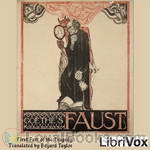 Faust, Part 1
Faust, Part 1
Faust is the protagonist of a classic German legend; a highly successful scholar, but also dissatisfied with his life, and so makes a deal with the devil, exchanging his soul for unlimited knowledge and worldly pleasures.Johann Wolfgang von Goethe's Faust is a tragic play in two parts. It is Goethe's most famous work and considered by many to be one of the greatest works of German literature.This first part of Faust is not divided into acts, but is structured as a sequence of scenes in a variety of settings. After a dedicatory poem and a prelude in the theatre, the actual plot begins with a prologue in Heaven and Scene 1 in Faust's study. | |
By: Johanna Spyri (1827-1901) | |
|---|---|
 Heidi (version 2 dramatic reading)
Heidi (version 2 dramatic reading)
"Heidi" takes us on a journey to the eventful childhood of a good-hearted girl from the Swiss Alps. A warm and loving story, full of touching moments, it reaches children and adults alike. It was written in 1880 and published in two parts: 1. Heidi's years of learning and travel. 2. Heidi makes use of what she has learned. This English translation from 1915 has "an especial flavor, that very quality of delight in mountain scenes, in mountain people and in child life generally, which is one of the chief merits of the German original... | |
By: John Fletcher (1579-1625) | |
|---|---|
 The Woman's Prize, or The Tamer Tamed
The Woman's Prize, or The Tamer Tamed
John Fletcher's comedy (probably written and performed around 1611) is a sequel to Shakespeare's The Taming of the Shrew, in which, as the title suggests, the tamer will be tamed. Petruchio, the shrew-tamer, has been widowed, and marries a second wife, Maria, a "chaste witty lady." At the instigation of her cousin Bianca, and with the fellowship of her sister Livia, Maria decides to go on strike for equal rights, refusing to behave as a proper 17th century wife. Fletcher's play addresses the issue of men and women's roles within marriage, a controversial issue for his day. | |
By: John Galsworthy (1867-1933) | |
|---|---|
 Skin Game
Skin Game
A small play in three acts. A kind of comic tragedy. The plot tells the story of the interaction between two very different families in rural England just after the end of the First World War. Squire Hillcrist lives in the manor house where his family has lived for generations. He has a daughter, Jill, who is in her late teens; and a wife, Amy, as well as servants and retainers. He is "old money", although his finances are at a bit of low ebb. The other family is the "nouveau riche" Hornblowers,... | |
By: John Kendrick Bangs (1862-1922) | |
|---|---|
 Peeps at People - Being Certain Papers from the Writings of Anne Warrington Witherup
Peeps at People - Being Certain Papers from the Writings of Anne Warrington Witherup
Written by a fictitious first-person narrator, this book puts a humorous spin on encounters with several famous people of the time. "I set forth from my office in London upon my pilgrimage to the shrines of the world's illustrious. Readers everywhere are interested in the home life of men who have made themselves factors in art, science, letters, and history, and to these people I was commissioned to go." -- Summary by TriciaG and from the book. | |
By: John Milton (1608-1674) | |
|---|---|
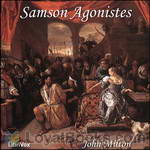 Samson Agonistes
Samson Agonistes
“The Sun to me is darkAnd silent as the Moon,When she deserts the nightHid in her vacant interlunar cave.”Milton composes his last extended work as a tragedy according to the classical Unities of Time, Place and Action. Nevertheless it “never was intended for the stage” and is here declaimed by a single reader.Samson the blinded captive, in company with the Chorus of friends and countrymen, receives his visitors on their varying missions and through them his violent story is vividly recalled... | |
By: John Rae (1882-1963) | |
|---|---|
 New Adventures of Alice (version 2 Dramatic Reading)
New Adventures of Alice (version 2 Dramatic Reading)
After reading and re-reading the book many time as a boy and wishing that Lewis Carroll would have written another Alice In Wonderland Book, John Rae began imagining what that girl would have gotten up to if he had done so. Telling these stories to his children over the years, where they were enthusiastically received, he finally decided to share them with the world. And here they are! The New Adventures of Alice | |
By: John Webster (c.1580 - c.1634) | |
|---|---|
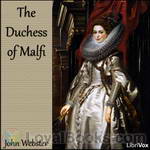 The Duchess of Malfi
The Duchess of Malfi
John Webster's bloody Jacobean tragedy exposes the decadence of the Italian court. The virtuous Duchess of Malfi, a young widow, secretly marries her steward Antonio, and is subsequently persecuted by her brothers: the sexually obsessed and eventually mad Ferdinand, and the corrupt Cardinal. | |
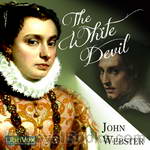 The White Devil
The White Devil
John Webster's The White Devil (1612) is a Jacobean revenge tragedy, replete with adultery, murder, ghosts, and violence. The Duke of Brachiano and Vittoria Corombona decide to kill their spouses, Isabella and Camillo, in order to be together, aided by the crafty and ambitious Flamineo, Vittoria's brother. Their actions prompt vows of revenge from Isabella's brother Francisco, the Duke of Florence, and Count Lodovico, who was secretly in love with her. The title refers to the early modern proverb that "the white devil is worse than the black," indicating the hypocrisy practiced by many of the characters in the play. | |
By: Johnston McCulley (1883-1958) | |
|---|---|
 Curse of Capistrano (Dramatic Reading)
Curse of Capistrano (Dramatic Reading)
The Curse of Capistrano is the first work to feature the fictional character Zorro . The story was later republished under the name The Mark of Zorro. The outlaw Zorro is Public Enemy #1 in southern California during the period of Mexican rule. But he's not a bad guy, really - he fights for justice for the oppressed. And when he meets the lovely Lolita, daughter of Don Pedro, who is on the governor's bad side, he has even more reason to fight. But she's being wooed by the rich and influential but wimpy Don Diego... | |
By: José Echegaray y Eizaguirre (1832-1916) | |
|---|---|
 Great Galeoto
Great Galeoto
"What touches us more closely is Echegaray's manipulation of the modern conscience, and its illimitable scope for reflection, for conflict, and the many-sided drama of temptation.... Not even Tolstoi, with all that delicacy and keenness of the Russian conscience, that profound seriousness, which moves us so variously in his great books, has a nobler consciousness of the dignity of suffering and virtue than this Spanish dramatist. And not less capable is he of a jesting survey of life." Echegaray won the Nobel Prize for literature in 1904... | |
By: Joseph Conrad (1857-1924) | |
|---|---|
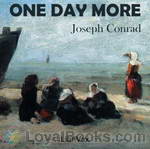 One Day More
One Day More
A one-act play. Eccentric Captain Hagberd has been waiting for years for his son to come home from the sea. He has scrimped and saved, outfitting a house for Harry to inherit upon his return, which will be in only "one day more." He has also planned that Harry will marry Bessie, the repressed maiden next door. Note: The recording was done outside, so there will be some ambient noise (airplanes, lawn mowers, birds, children... etc). | |
By: Joseph Smith Fletcher (1863-1935) | |
|---|---|
 Orange-Yellow Diamond
Orange-Yellow Diamond
| |
By: Josephine Turck Baker (1864-1942) | |
|---|---|
 Art of Conversation: Twelve Golden Rules
Art of Conversation: Twelve Golden Rules
Many of us find it challenging to speak to other people, for various reasons. Some of us are afraid of being called a bore. Others are worried that we will be accused of hogging attention. Many of us simply don't know what to talk about. This book is an entertaining and enlightening manual that may be able to help. Through a series of twelve dialogues between a man and a woman, we are introduced to twelve "golden rules" that will help us navigate the waters of interpersonal communication. He: Read by KevinS She: Read by Devorah Allen | |
By: Jules Verne (1828-1905) | |
|---|---|
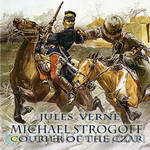 Michael Strogoff
Michael Strogoff
This is the account of the perilous mission of Michael Strogoff, courier for Czar Alexander II, who is sent from Moscow to the besieged city of Irkutsk, where the governor, brother of the Czar, has taken his last stand against a Tartar rebellion led by the fearsome Feofar-Khan. When telegraph lines are cut between the Russian Far East and the mainland, Strogoff must make his way through hostile territory to warn the governor of the return of the traitor Ivan Ogareff, a disgraced former officer who seeks vengeance against the Tsar’s family by the destruction of Irkutsk. | |
By: Karel Čapek (1890-1938) | |
|---|---|
 R.U.R. (Rossum’s Universal Robots)
R.U.R. (Rossum’s Universal Robots)
Helena Glory, as the daughter of a major industrial power's president, is a woman on a mission. She faces the island factory of Rossum's Universal Robots, the world's leading company in robotic engineering. She is convinced that these new creations called robots they make are deserving of rights like humans do. Everyone else is convinced robots are nothing more than tools for human use. Is it so, or is a robot rebellion becoming a more likely prospect as the robots start to seem more intelligent than first thought? First performed in English in 1922, R... | |
By: Kate Douglas Wiggin (1856-1923) | |
|---|---|
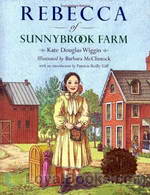 Rebecca of Sunnybrook Farm
Rebecca of Sunnybrook Farm
Eleven year old Rebecca Rowena Randall travels to Riverboro, Maine, to live with her spinster aunts, Jane and Miranda Sawyer. Her father has been dead for three years and her mother is unable to cope with her brood of seven growing children. Rebecca is being sent to her aunts' farm to try to improve her prospects in life and also ease the family's burden. The aunts had actually wanted her older and more placid sister, Hannah, who is more handy round the house to be sent, but Rebecca's mother sends the dreamy, more imaginative Rebecca instead... | |
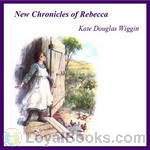 New Chronicles of Rebecca
New Chronicles of Rebecca
This book tells further stories from the period of Rebecca’s sojourn in Riverboro. | |
By: Kenneth McGaffrey (??-1938) | |
|---|---|
 The Sorrows of a Show Girl
The Sorrows of a Show Girl
Originally printed in The Morning Telegraph in New York, this is the story of Miss Sabrina, the show girl, and her ups and downs with the unpredictable theatrical industry and the Great White Way, the lights and glamour of Broadway. "In order to set myself right with both the public and the vast army of Sabrinas that add youth and beauty to our stage, and brilliancy and gaiety to our well known cafes, I wish to say that she is all that she should be...”- Kenneth McGaffrey | |
By: L. Frank Baum (1856-1919) | |
|---|---|
 Marvelous Land of Oz (version 2) (Dramatic Reading)
Marvelous Land of Oz (version 2) (Dramatic Reading)
The Marvelous Land of Oz Being an account of the further adventures of the Scarecrow and Tin Woodman and also the strange experiences of the highly magnified Woggle-Bug, Jack Pumpkin-head, the Animated Saw-Horse and the Gump; the story being A Sequel to The Wizard of Oz. | |
By: Langdon Mitchell (1862-1935) | |
|---|---|
 The New York Idea
The New York Idea
I find it very hard to classify "The New York Idea" under any of the established rubrics. It is rather too extravagant to rank as a comedy; it is much too serious in its purport, too searching in its character-delineation and too thoughtful in its wit, to be treated as a mere farce. Its title—not, perhaps, a very happy one—is explained in this saying of one of the characters: "Marry for whim and leave the rest to the divorce court—that's the New York idea of marriage." Like all the plays,... | |
By: Lewis Carroll | |
|---|---|
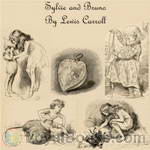 Sylvie and Bruno
Sylvie and Bruno
The novel has two main plots; one set in the real world at the time the book was published (the Victorian era), the other in the fantasy world of Fairyland. While the latter plot is a fairytale with many nonsense elements and poems, similar to Carroll’s Alice books, the story set in Victorian Britain is a social novel, with its characters discussing various concepts and aspects of religion, society, philosophy and morality. This book is the first of two volumes and the two intertwining stories are brought to a close in the second volume, Sylvie and Bruno Concluded. | |
By: Lillian Nixon Lawrence | |
|---|---|
 Little Dramas for Primary Grades
Little Dramas for Primary Grades
37 short and very short plays for young children - David O Readers: Linette Geisel: Camel, Big Black Dog, First Child, Camel, Grandma, Red Fox, Child, First Pig, Mrs. Dove, Third Chick, Littlest Fir Tree, French Doll, Mary, Camel, Sparrow, Mrs. Sparrow, Sheep, Little Tree, Columbine, Rose, Lobster, Jellyfish, Flowers, Sanja, Tree, Camel Tomas Peter: Lion, Odd Man, Lion, Fisherman, Hans, Fifth Pig, Mr. Jay, First Chick, Santa Claus, Tin Soldier, Old Year, Man, Thrush, Mr. Sparrow, Cow, Woodcutter,... | |
By: Lord George Gordon Byron (1788-1824) | |
|---|---|
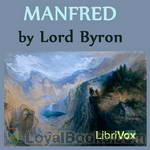 Manfred
Manfred
Manfred is a dramatic poem in three acts by Lord Byron, and possibly a self confessional work. A noble, Manfred, is haunted by the memory of some unspeakable crime. In seeking for forgetfulness and oblivion, he wanders between his castle and the mountains. He has several encounters with the people who try to assist him, as well as spirits that rule nature and human destiny. The poem explores themes of morality, religion, guilt and the human condition. | |
By: Lorenzo Da Ponte (1749-1838) | |
|---|---|
 Don Juan
Don Juan
Don Juan (Spanish), Don Giovanni (Italian) is a legendary, fictional libertine. Although the various iterations of the Don Juan myth show some variation, the basic story remains the same. Don Juan is portrayed as a wealthy, seductive libertine who devotes his life to seducing women, taking great pride in his ability to seduce women of all ages and stations in life. Don Giovanni, an opera composed by Wolfgang Amadeus Mozart with libretto by Lorenzo da Ponte, is arguably the best-known version. First performed in Prague in 1787, it inspired works by E... | |
By: Louisa May Alcott (1832-1888) | |
|---|---|
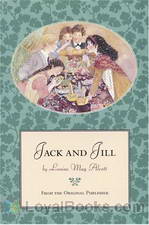 Jack and Jill
Jack and Jill
Louisa May Alcott, more famously known for her Little Women series, takes a familiar nursery rhyme and creates a whole novel out of it in one of her last books Jack and Jill: A Village Story. Though she continued to publish under the penname AM Barnard, this book probably marked the end of a particular writing phase in 1880. Jack and Jill is set in the fictional Harmony Village. On a December afternoon, the youngsters of the village are out enjoying the bracing cold and snow. The bright winter shines down as they have fun skating and sledding... | |
 An Old-Fashioned Girl
An Old-Fashioned Girl
Polly Milton, a 14-year-old country girl, visits her friend Fanny Shaw and her wealthy family in the city for the first time. Poor Polly is overwhelmed by the splendor at the Shaws’ and their urbanized, fashionable lifestyles, fancy clothes and some other habits she considers weird and, mostly, unlikable. However, Polly’s warmth, support and kindness eventually win her the hearts of all the family members. Six years later, Polly comes back to the city to become a music teacher. | |
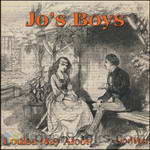 Jo's Boys
Jo's Boys
Jo’s Boys is the third book in the Little Women trilogy by Louisa May Alcott, published in 1886. In it, Jo’s “children”, now grown, are caught up in real world troubles. All three books – although fiction – are highly autobiographical and describe characters that were really in Alcott’s life. This book contains romance as the childhood playmates become flirtatious young men and women. The characters are growing up, going out into the world and deciding their futures. | |
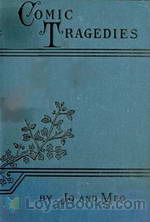 Comic Tragedies
Comic Tragedies
Fans of Louisa May Alcott's Little Women will remember the elaborate plays which the March sisters loved to perform. This volume, published after Alcott's death, is a compilation of the real plays written by her and her sisters, which were fictionalized in Little Women. | |
By: Lucian of Samosata | |
|---|---|
 Lucian's Dialogues Volume 1: The Dialogues of the Gods
Lucian's Dialogues Volume 1: The Dialogues of the Gods
The Dialogues of the Gods are 26 miniature dialogues mocking the Homeric conception of the Greek gods written in Attic Greek by Syrian author Lucian of Samosata. Almost 1900 years old, these dialogues still retain a lot of their original humor and wit. The cast list for dialogues with 3 or more readers is given below: Dialogue 8: Zeus: Owen CookHephæstus: KevinSStage directions: Foon Dialogue 9: Poseidon: ToddHWHermes: Owen CookStage directions: Foon Dialogue 13: Zeus: ToddHWAsklepius: FoonHerakles: KevinS Dialogue 20: Zeus: alanmapstoneHermes: Owen CookHera: FoonAthena: SoniaAphrodite: Sandra SchmitParis: Aaron WhiteStage directions: ToddHW Editor: Campbell Schelp | |
 Lucian's Dialogues Volume 2: The Dialogues of the Sea-Gods
Lucian's Dialogues Volume 2: The Dialogues of the Sea-Gods
The Dialogues of the Sea-Gods are 15 miniature dialogues mocking the Homeric conception of the Greek gods, originally written in Attic Greek by Syrian author Lucian of Samosata. Almost 1900 years old, these dialogues still retain a lot of their original humor and wit. - Summary by Foon Cast: Alpheius/Menelaus: ZoinkMeister Patrick Amphitrite/Panope: alanmapstone Cyclops: Nemo Delphines/Amymone: Leanne Yau Doris: Foon Enipeus: Rob Marland Galateia: Anita Sloma-Martinez Galene/Xanthus: Jeanne Viray Iphianassa: Pseudonymous Nerd Iris: Availle Notus: Stefan Von Blon Poseidon: Larry Wilson Protheus/Triton: Adam Bielka Thalassa: B L Newman Thetis: K... | |
 Lucian's Dialogues Volume 3: The Dialogues of the Dead
Lucian's Dialogues Volume 3: The Dialogues of the Dead
Dialogues of the Dead are 30 miniature dialogues mocking the Homeric conception of the Greek gods, originally written in Attic Greek by Syrian author Lucian of Samosata. Almost 1900 years old, these dialogues still retain a lot of their original humor and wit. - Summary by Foon The cast list for dialogues with 3 or more readers is given below: Dialogue 2: Kroesus: Lynette Caulkins Pluto: Alan Mapstone Midas: David Purdy Sardanapalus: TriciaG Menippus: Adrian Stephens Dialogue 3: Menippus:... | |